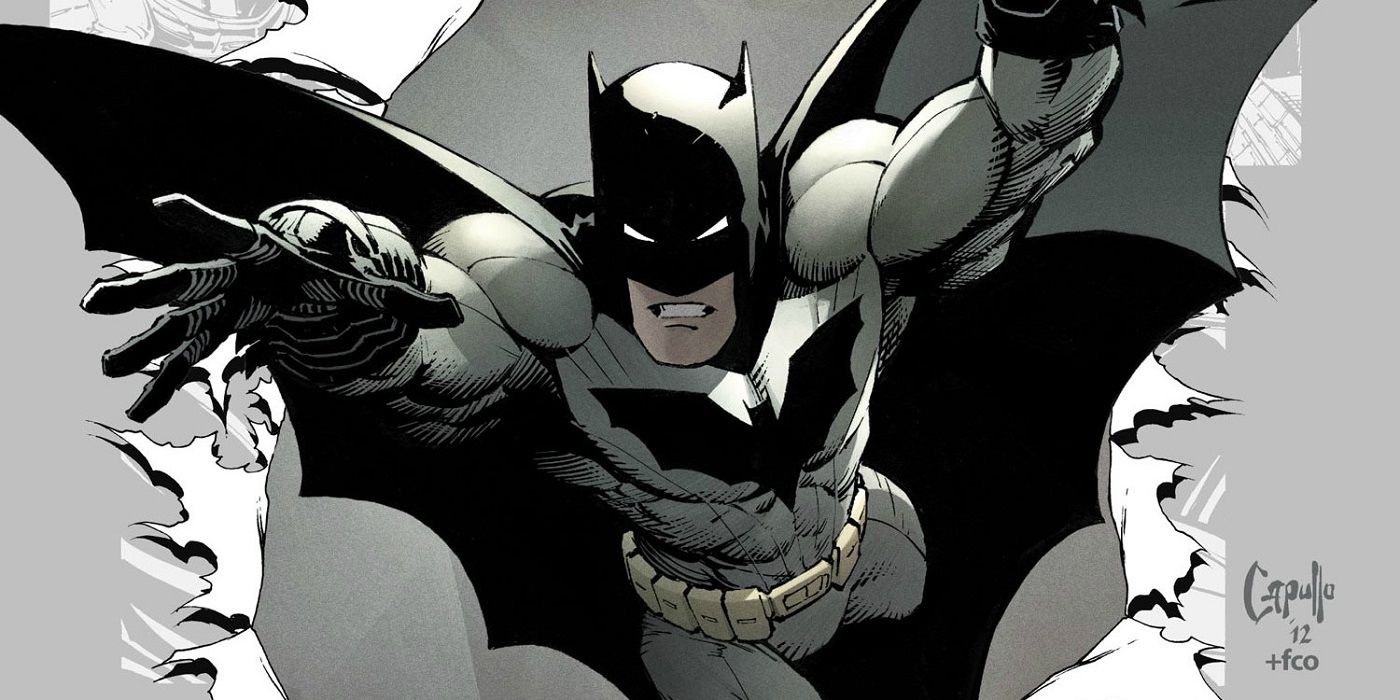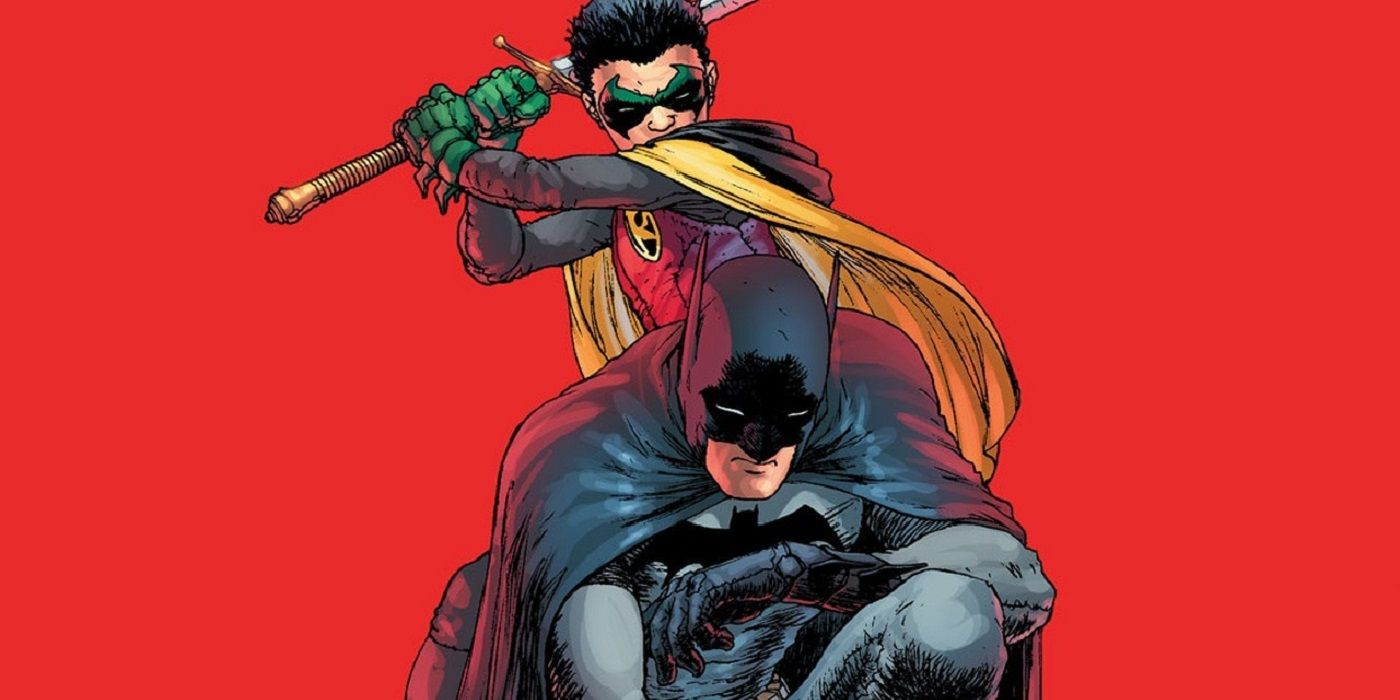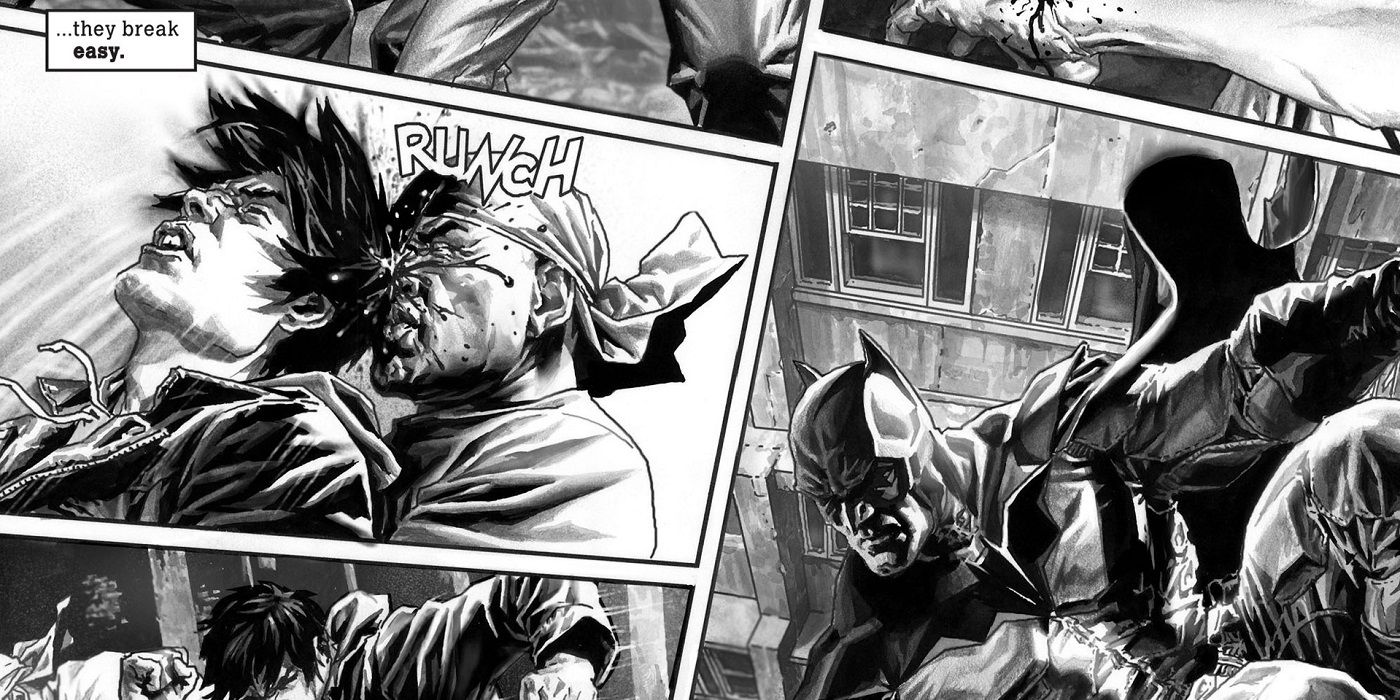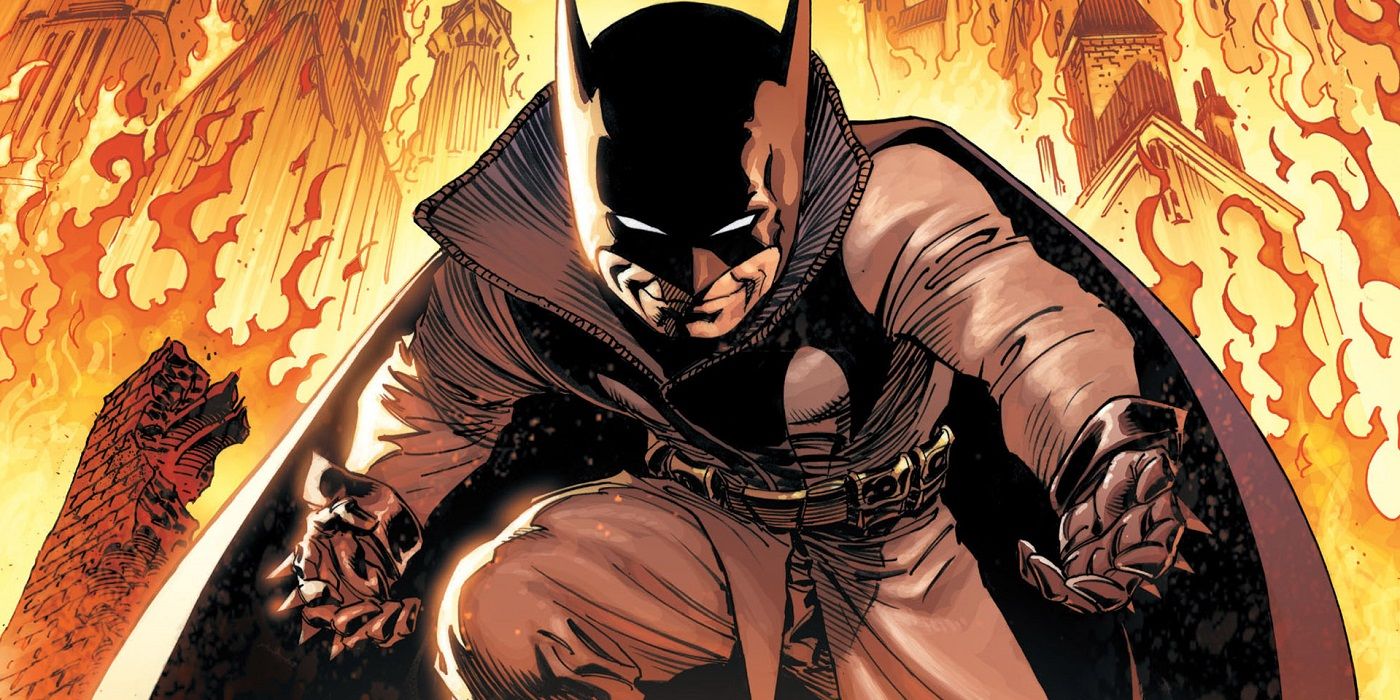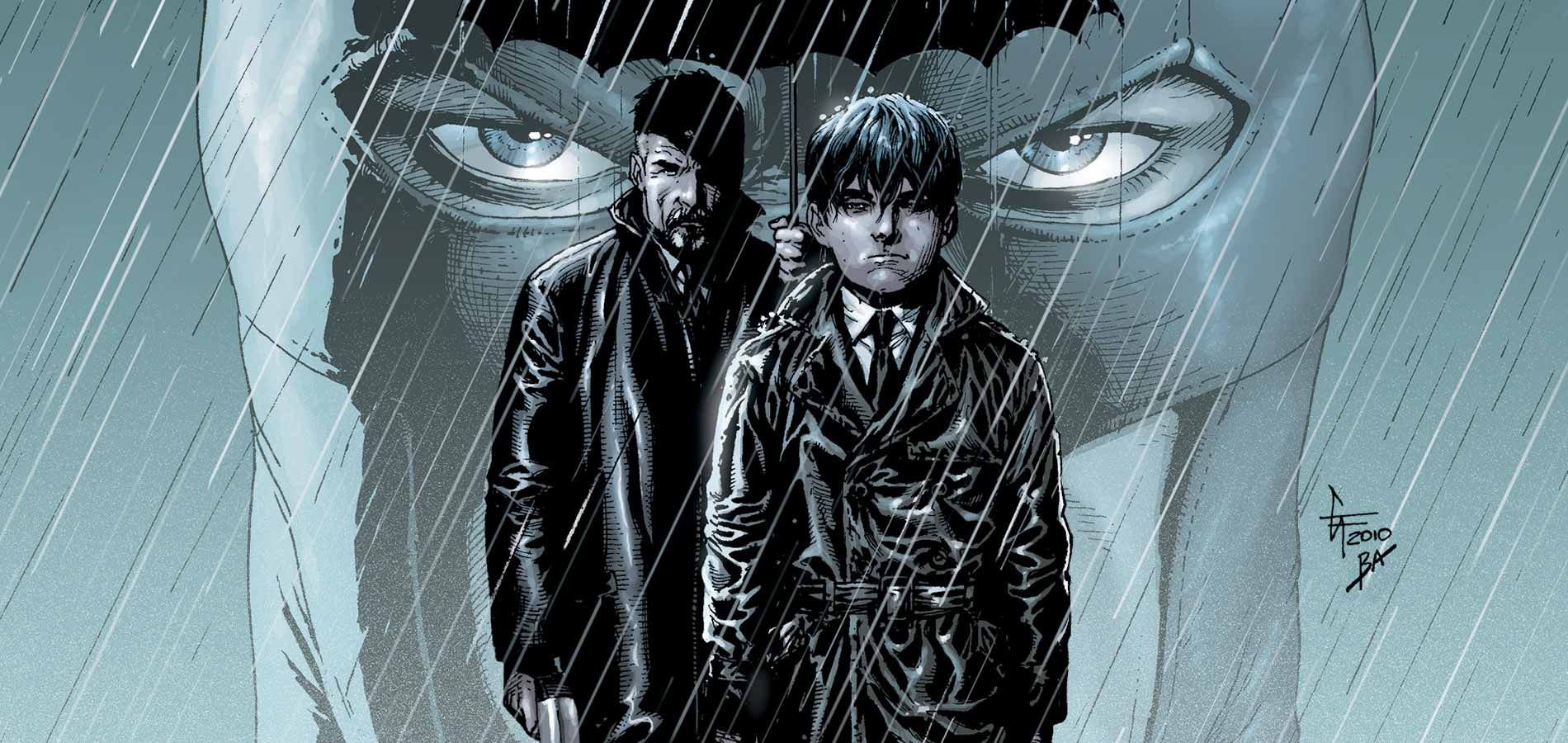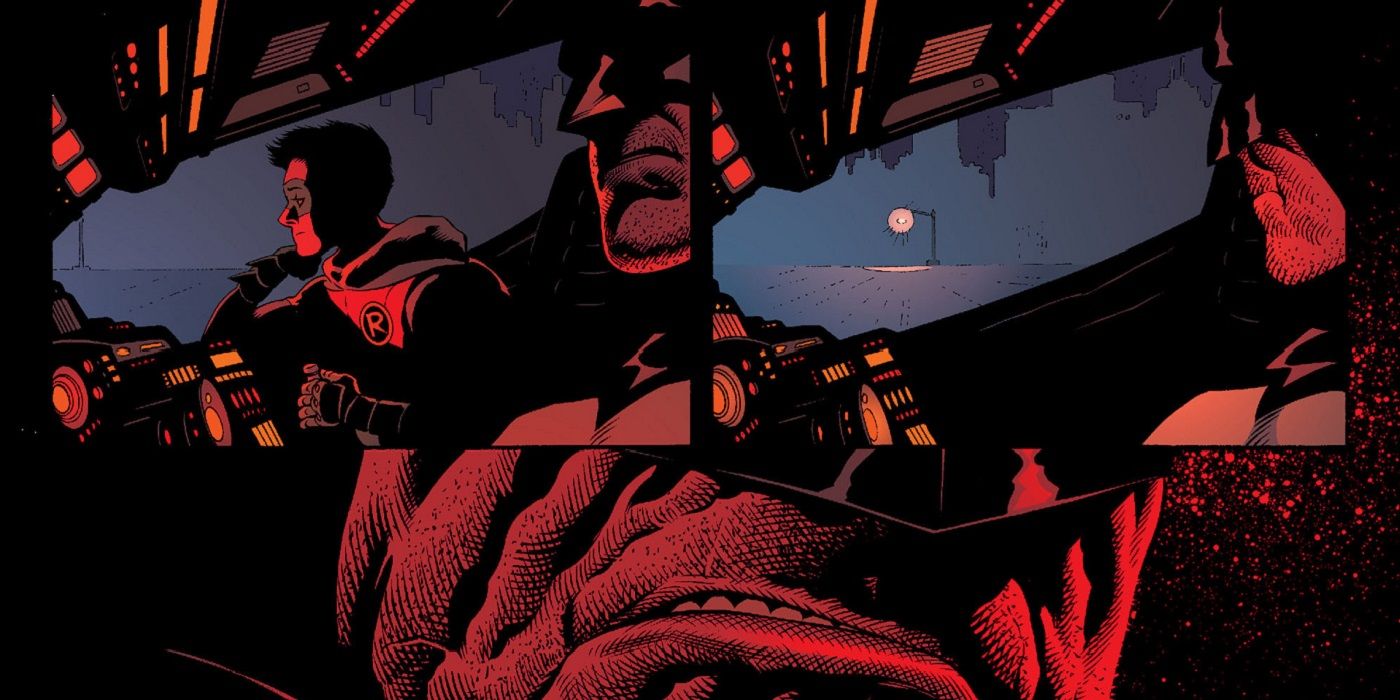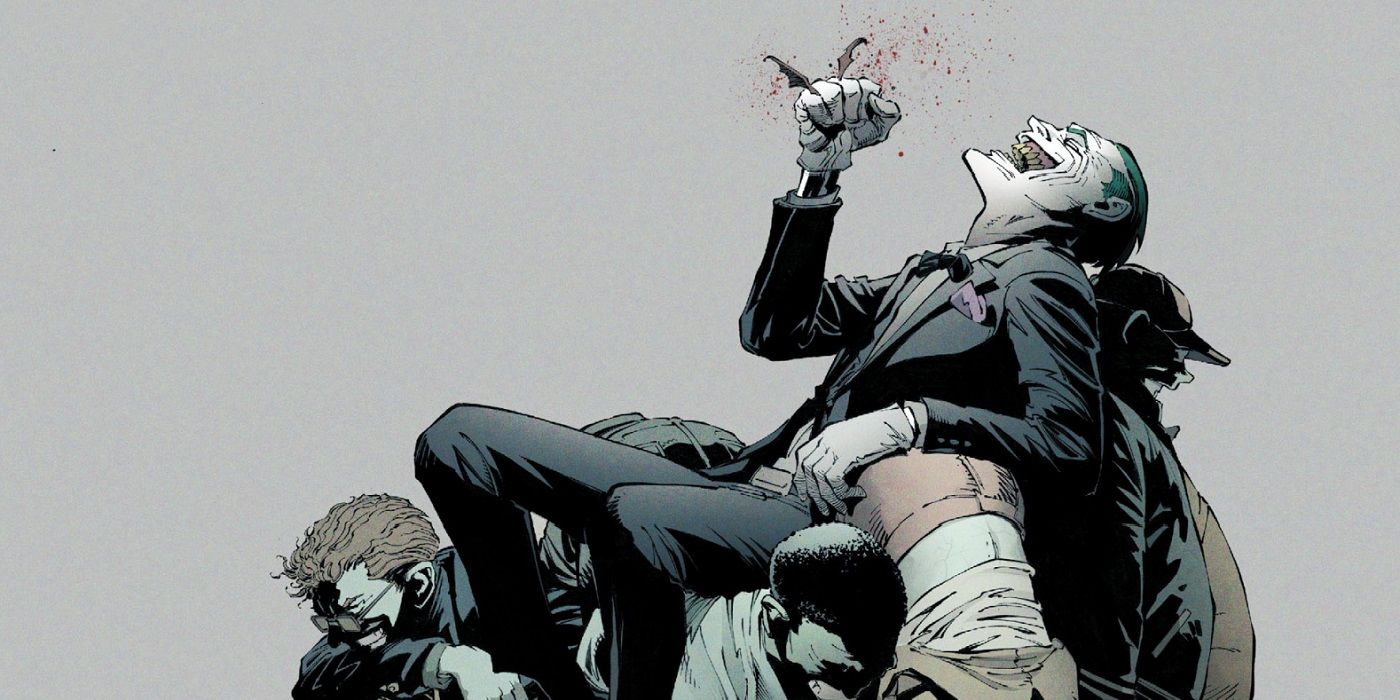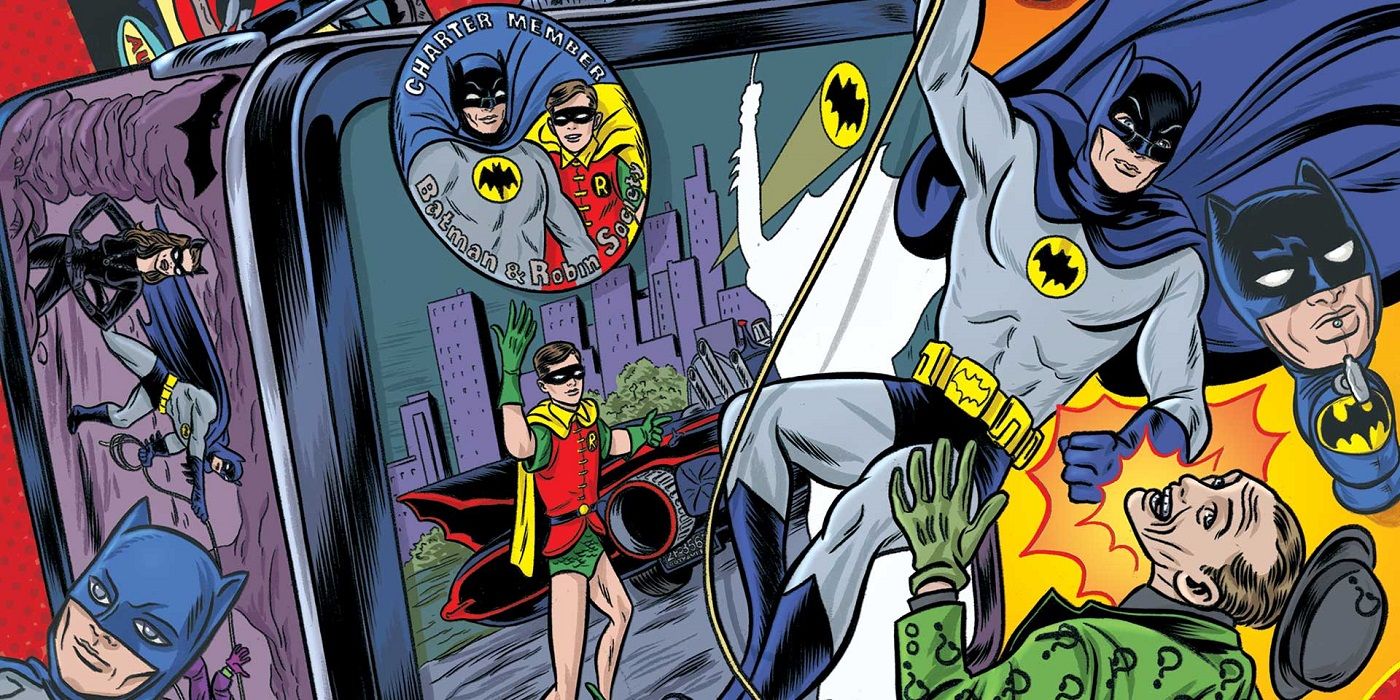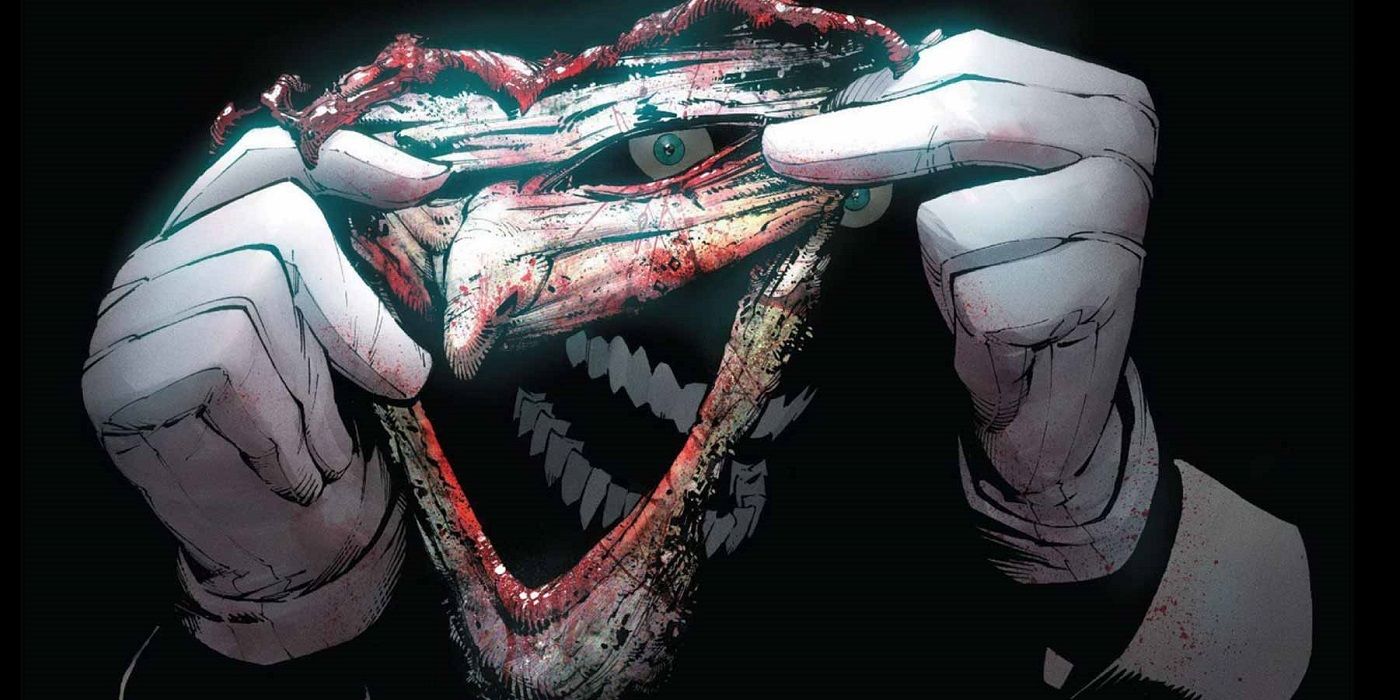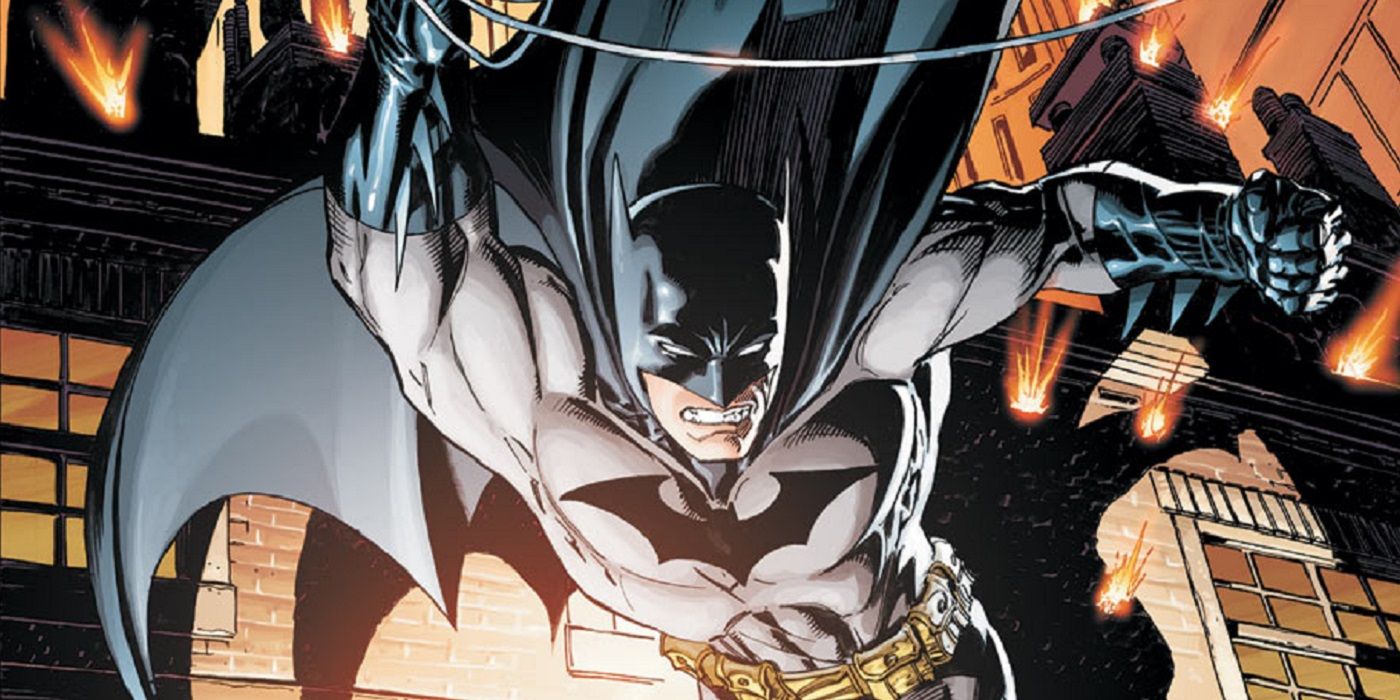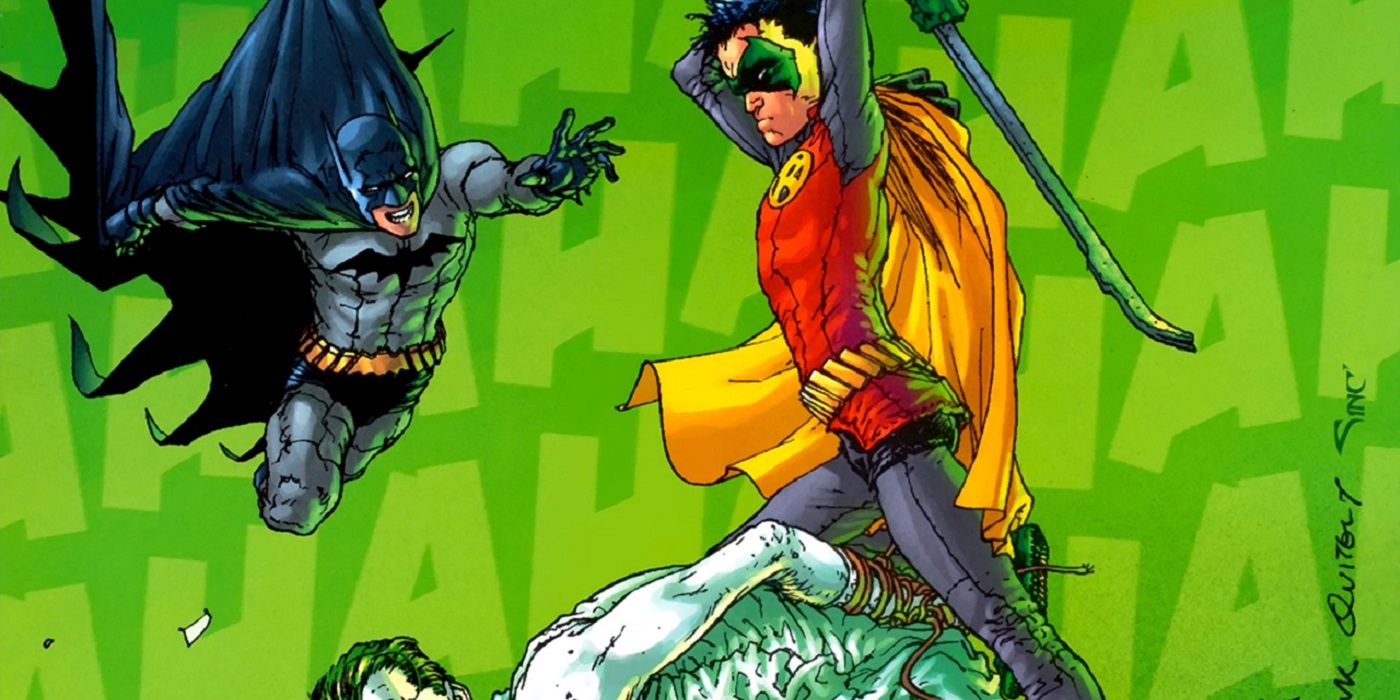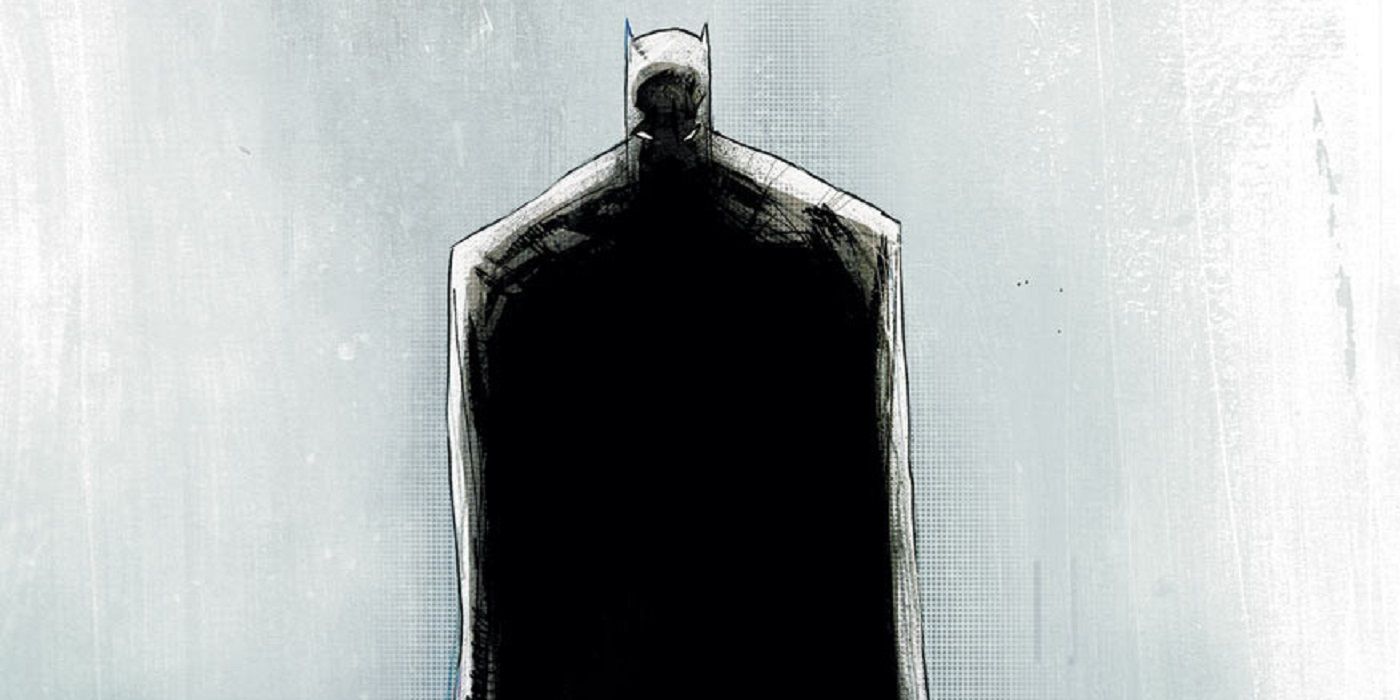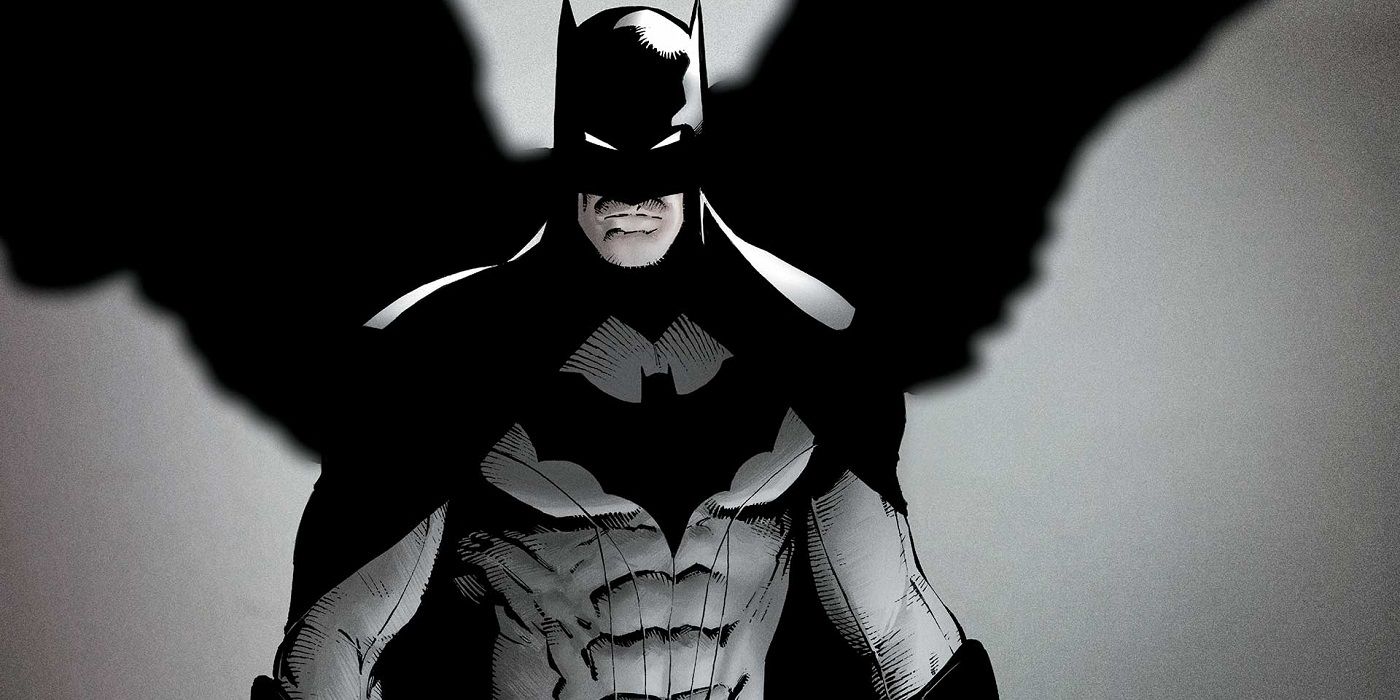No comic book character can boast quite the collection of great comic book stories written about them as Batman. There have been excellent "Batman" comic books going back over 75 years, but it's not just a matter of longevity. You can pick any given year and there will likely be a great "Batman" comic -- he just seems to draw out the best in writers and artists, and of course, in fans.
RELATED: The Most Important #1 Issues (2010 – Today)
Due to the sheer volume of great Batman stories out there, we have decided to split up our "Greatest Batman Stories Ever" series into decades, beginning with 2010-today, an era marked by the first new "Batman" #1 since 1940! So please, enjoy with our compliments, the 15 greatest Batman stories in comics within the current decade.
15 Batman Vs. Robin
In this three-part arc by Grant Morrison, Andy Clarke and Scott Hanna that ran in "Batman and Robin" (Volume 1) #10-12, Batman (Dick Grayson) and Robin (Damien Wayne) were assisted by the mysterious detective Oberon Sexton in their search for Bruce Wayne after they discovered that his "corpse" from "Final Crisis" was really just a clone. Sexton, meanwhile, was being chased by hitmen.
Things take a dramatic turn after Robin attempts to murder Batman. See, Talia Al Ghul was shocked that her son Damian would rather remain Dick's Robin than live with her, so she took over Damian's body and used the assassin Deathstroke the Terminator, who had a history with Batman going back to Dick's time as Robin and Nightwing, to force Damian to kill Batman. Ultimately, Batman saved the day, but when they go to tell Oberon Sexton about the news that Bruce might be lost in time, they discover that Sexton is not who they thought he was!
14 Rule Number One
Lee Bermejo was nominated for an Eisner Award for this excellent short story that he wrote and drew from the third issue of the 2014 volume of "Batman: Black and White." In it, a teenager was training to become Batman's partner (we don't know which Robin it is -- if it is even a Robin at all!) and was struggling with Batman's directive to buy some drugs from a local gang.
The title comes from the fact that being a vigilante is something with a lot of rules, but ones that are always changing. Of course, when you really think about it, being a vigilante is, in and of itself, breaking the rules of law. Do you just do whatever Batman tells you to do, even if it seems like it could lead to you getting your head blown off? It's an interesting question without an easy answer, but a position that is handled well within this story. Bermejo's artwork is stunning and the story ends with an unexpectedly cute twist.
13 Batman Impossible
Peter Tomasi, Ardian Syaf and Vicente Cifuentes delivered this charming tale from "Batman and Robin Annual" #1. In it, Damian Wayne sends Bruce Wayne on a scavenger hunt throughout Europe, where Bruce's parents spent their honeymoon. Along the way, Bruce gets to reconnect with his dead parents through interesting things that he never knew about (like a painting drawn by his mother that his father had paid a hotel to keep up on their walls at all times).
Damian, meanwhile, sent Bruce on the trip in part so that he could patrol Gotham City on his own, as the new Batman. He even used his own custom costume as he launched his investigation on a case. As you might expect, it was downright hilarious to see Commissioner Gordon and a GCPD detective deal with "Batman." In the end, Bruce and Damian are reunited in London, just in time to see Alfred perform on-stage. It was a delightfully whimsical tale, despite what the inflammatory image above suggests!
12 Earth One
"Batman: Earth One" was the first volume in DC's series of graphic novels that gave creators a blank slate to re-invent major DC characters however they wanted. In this case, Geoff Johns, Gary Frank and Jonathan Sibal didn't just re-tell the origin of Batman, they completely re-invented the character, his friends and even his foes.
This time around, it was not a case of Bruce Wayne flipping a switch when he became Batman. No, here Batman was very much out of his element, even after he donned his trademark look and gravely presence. Instead, it was a re-envisioned Alfred who had to do most of the heavy lifting at the start of their attempts at becoming vigilantes. Bruce's crimefighting efforts were inspired when he begins to learn that his parents' deaths were ordered by the corrupt mayor of Gotham City, Oswald Cobblepot. However, his attempts to investigate Cobblepot are interrupted when a serial killer begins to terrorize Gotham City, including kidnapping Sergeant James Gordon's teenager daughter, Barbara!
11 Halloween
Dustin Nguyen and Derek Fridolfs' "Li'L Gotham" was an adorable journey into their particular take on the world of Gotham City. In it, the characters were drawn in a cute "kid" style by Nguyen and the stories had an all-ages friendly feel, and typically revolved around whatever holiday was happening that particular month. It lasted almost two years, so the second time around, the holidays are downplayed a bit.
Every issue was great, but if we were to choose one to spotlight, we'd go with the very first one, where Batman and Robin are on patrol on Halloween night. Bruce decided that Damian needed to try to experience Halloween the same way that every other kid did, and since he was wearing a costume already, he fit right in. Similarly, Halloween was the night where Batman's villains could walk among the people without anyone paying them any attention, an achievement the rogues happily celebrated and Batman oddly allowed... well, for a little while, anyway; they're still criminals, after all. And he's still Batman.
10 Undone
Following the death of Damian Wayne in "Batman Incorporated" #8, the Batman titles all had issues that reacted to Damian's death. The most powerful one by far was in "Batman and Robin" #18, where Peter Tomasi, Patrick Gleason and Mick Gray showed how Damian's death had left Batman "Undone."
The issue's story was told without dialogue, although Bruce does find a letter Damian wrote to him before he died. The silence was resounding, as there were literally no words to express just how haunted Batman was by the loss not only of his partner, but his son. Throughout the issue, Batman threw himself into fighting crime to get his mind off of his missing son, but instead was constantly haunted by Damian's presence... and then his absence. It's a haunting tale, told with such powerful emotions by Tomasi, Gleason and Gray. As Batman breaks down, the reader gets a rare glimpse into the true tragedy behind his pain and suffering.
9 Endgame
In "Endgame," which ran from "Batman" #35-40, Scott Snyder, Greg Capullo and Danny Miki delivered a fitting conclusion to the story they began in "Death of the Family." After that story, the Joker had become disgusted with his relationship with Batman, as he felt the Dark Knight had broken their social contract. Thus, Batman was boring and needed to be destroyed. Joker tried to achieve this through sending Batman's own Justice League teammates after him, controlling them through Joker Venom.
After Batman found a way to defeat his superhero friends, he found himself at a loss as to how to defeat Joker's larger plan, which involved infecting the entire city of Gotham with a twisted version of Joker Venom. In the end, Batman was forced to turn to his greatest enemies for help, as after all, Joker wanted the destruction of Gotham City period. Even villains need a place to live, right? The story ended the only way it could, with Batman and Joker fighting each other to the seeming death.
8 Main Title
"Batman '66," the comic book series that was set in the universe of the 1960s "Batman" TV series, was an utter delight month after month. As such, it's very difficult to pick a stand-out issue, as they were all so great. Jeff Parker did a particularly wonderful job writing for the series. However, if we were to pick just one issue, it would be the strikingly nostalgic final story, "Batman '66" #30's "Main Title" by Lee Allred and Mike Allred.
The story is nominally about Batman's villains all celebrating a crime convention, where they show off all their latest death traps and the like. When they refused to invite the Riddler, he tipped Batman and Robin off about the gathering and the heroes went to go break it up. However, when we said "nominally," we meant that it is really a set-up by the Allreds just so that they could find a way to re-create the main title credits of the "Batman" TV series, while having it actually make sense in the story! How amazingly bizarre is that? The whole issue is packed to the brim with wonderfully obscure references. It's a nostalgia overload, and it is incredible!
7 Death Of The Family
In this storyline, which had tie-ins with all of the books in the expanded Batman universe (but mainly took place in "Batman" #13-17 by Scott Snyder, Greg Capullo and Jonathan Glapion), the Joker had returned to Gotham City. He had also reunited himself with his face, which he had cut off in an early New 52 issue of "Detective Comics." Even more disturbingly, however, was that he also appeared to have discovered both Batman's secret identity and that of every one of Batman's associates.
The Joker then captured them all and seemingly removed their own faces; but in the end, it was all part of a sick plot by the Joker, who had grown angry at Batman for what he saw as becoming overly reliant on other people. This, of course, suggested, in its own part, a sort of twisted love that the Joker felt for Batman. It was all a taut and complicated thriller by Snyder, Capullo and Miki that raised the stakes in the Joker/Batman dynamic, while also seemingly blowing it all up, and leading to the aforementioned "Endgame."
6 The Return Of Bruce Wayne
At the end of "Final Crisis," Darkseid had seemingly killed Batman with his Omega Sanction. However, we soon learned that instead of killing him, Darkseid had sent Batman spinning, lost in time. Batman was now trapped in the past and forced to find a way to fight his way back to his own present. However, since this is Batman we're talking about here, Darkseid knew very well that Batman would eventually make his way back. Thus, he set up a trap so that Batman would bring more and more "Omega energy" with him on every time jump, eventually collecting enough so that on his final jump home, he would destroy the universe.
Meanwhile, Batman's superhero friends were traveling through time trying to find him, as well. Each issue in the series had a different artist and saw Batman visiting a different point in history, inevitably getting caught up in fighting for justice in that time period... because Batman. Naturally, he found a way to outwit Darkseid and complete his return.
5 Batman And Robin Must Die!
"Batman and Robin Must Die!" is the final arc of Grant Morrison's stint on "Batman and Robin," set before Bruce Wayne returned. Drawn by Frazer Irving, it was a twisty, mind-bending story told out of sequence that concluded this phase of Grant Morrison's Batman mega-storyline. The main villain was Doctor Hurt, of the Black Glove, who was using Professor Pyg to drug the masses of Gotham City to turn the town into the capital of crime. Hurt then publicly proclaimed himself to be Thomas Wayne.
Meanwhile, Robin had a long, strange encounter with the Joker that began with him trying to beat information out of the Clown Prince of Crime, and ended with the Joker dressing him up as a clown as part of an attack on Doctor Hurt of his own. In the end, the whole thing turned out to be a ruse by Dick and Damian that tied directly in with the end of "The Return of Bruce Wayne." It's a very clever arc with excellent artwork from Irving.
4 Zero Year
"Zero Year" was an epic, year-long story by Scott Snyder, Greg Capullo and Danny Miki that took place in "Batman" #21-27, 29-33. The story worked as an origin for Batman, but one that managed to avoid simply duplicating the work of Frank Miller and David Mazzucchelli in their classic "Year One." It did so by coming up with a sweeping story that involved some of the same basic plot lines -- Bruce Wayne returning to Gotham City after being gone for years and slowly learning how to become Batman -- but taking a grander scale to everything.
The main villain of the arc (which is split into three smaller stories) was the Riddler, who effectively took over the entire city of Gotham, knocking everything back to square zero. Bruce has to not only save his city, but find out what kind of man it will take to become the Batman that Gotham City needs. Capullo and Miki are given the opportunity to astonish readers with some astonishingly over-the-top sequences in Snyder's innovative story, which is destined to be remembered fondly as one of Batman's greatest.
3 The Black Mirror
Scott Snyder's first extended Batman work took place in this long intertwined arc through "Detective Comics" #871-881. These stories came out during the point in time when Bruce Wayne and Dick Grayson were both acting as Batman, with Dick concentrating on Gotham City while Bruce operated Batman Incorporated, a world-wide operation of Bat-themed agents. Snyder tells the story of both Dick Grayson and Commissioner James Gordon dealing with problems from their past.
For his part, Dick deals with the daughter of the gangster who killed his parents. Their reunion is bittersweet when Dick realizes that she is not quite as pure as she claims to be. Gordon, meanwhile, is dealing with the return of his son into his life. James Gordon Jr. has become a heavily disturbed young man and Gordon has a hard time coming to grips with it all. The Grayson stories were drawn by Jock while the Gordon stories were drawn by Francesco Francavilla (originally the Gordon stories were back-ups, but then became part of the narrative on their own when "Detective Comics" ceased to have back-up stories mid-way through the story). Snyder does a wonderful job showing how easy it is for people to see what they want to see in the people that they love.
2 Leviathan
When Batman returned from the "dead" in "The Return of Bruce Wayne," he foresaw a powerful enemy that he had to pull out all of the stops to defeat. That enemy was known as Leviathan, and it inspired Batman to form the international group called Batman Incorporated, so he could take on his new global enemy. The story was written by Grant Morrison and it took place in both volumes of his ongoing comic book series, the first volume of which was called "Batman Inc." while the second was "Batman Incorporated," as well as a "Leviathan Strikes" one-shot.
Along the way, Batman also got involved with the spy organization, Spyral, which controlled the original Batwoman, Kathy Kane, who Morrison brought back in this series. Yanick Paquette was the initial artist on the series, but Chris Burnham became the main artist eventually. As it turned out, the head of Leviathan was none other than Talia Al Ghul. She would stop at nothing to take down Bruce Wayne, even if it meant sacrificing their son. This was an epic tale that also managed to deliver intimate one-shots on a routine basis, like a great story featuring Stephanie Brown (before the New 52 erased her time as Batgirl) and the aforementioned Batwoman arc. It all ended in a tragic conclusion, as Batman and Talia's struggles went far beyond the pale.
1 The Court Of Owls
The New 52 era of Batman began with a re-launched series by Scott Snyder, Greg Capullo and Jonathan Glapion, and their opening arc changed the landscape of Gotham City forever. Their debut storyline was an eleven-issue epic introducing the Court of Owls. As it turned out, there was a mysterious organization working in Gotham City for hundreds of years. They had secretly been pre-selecting members to join them as they helped direct the future of the city. Batman threw quite a bit of a wrench into their plans to control the city and they finally decided that it was time for them to reveal themselves to him.
When Batman proved to be made out of sterner stuff than they expected, they unleashed their full army of Talons, their long-living assassins. This led to an epic crossover event where all of the various Bat-titles had to help prevent a wave of assassinations from taking place by the Talons. In the end, it turned out that Lincoln March, a candidate for Mayor of Gotham (and a member of the Owls) decided to double-cross the Court after they intended to have him killed as part of their plot against Bruce Wayne. In a final battle, he revealed a dramatic secret connection he believed he had with Bruce. This opening arc, with fantastically dynamic artwork by Capullo, set the stage for Scott Snyder's historic run on "Batman" in style.
What was your favorite Batman story of this decade? Let us know in the comments section!

